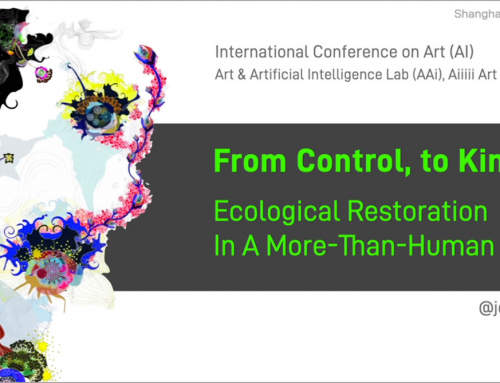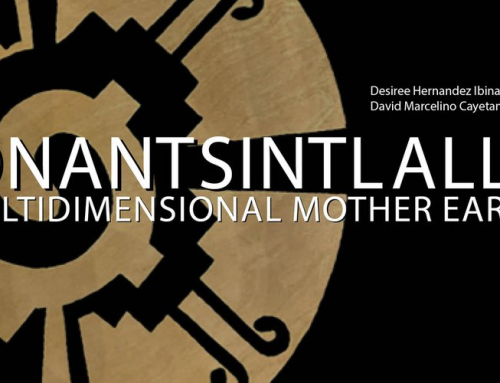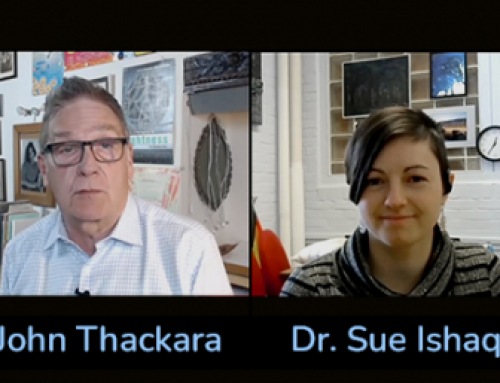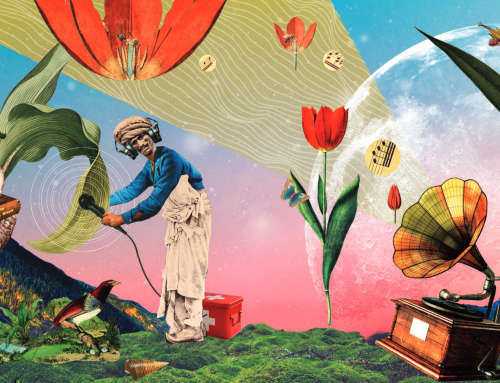I gave a talk at an event called Green Platform at Palazzo Strozzi in Florence.
Introduction: measuring what matters
“These are my principles. If you don’t like them, I have others”.
Groucho Marx could also have been talking about environmental standards. Our world is awash in eco information, but starved of meaning.
Hundreds of organisations churn out a flood of reports, graphs, studies, punditry – and lists.
So many lists!
I’m supposed to be an expert on sustainability, but it still gives me a headache trying to keep track of the Triple Bottom Line; the Three Main Components (and Four System Conditions) of The Natural Step; One Planet Living’s Ten Guiding Principles; the World Wildlife Fund’s Three Forms of Solidarity; the Copenhagen Agenda’s Ten Principles for Sustainable City Governance; the Framework of Eight Doorways of the Sustainable Schools Network; the 12 Indicators To Follow of the Earth Policy Institute; the 11 Indicators of a Sustainable City (developed by Montreal); and the Ten Hannover Principles promulgated by Bill McDonough.
Each list is the result of deep thought by smart and dedicated people – and there are doubtless other important to-do lists out there that I’ve missed. But can we please agree: enough already?
The pervasive tendency of polticians to dissemble adds to the uncertainty.
Vague promises to use “as few natural resources as possible,” “reduce waste to a minimum” or deliver the “greenest Olympics planned so far” amplifies our feelings of anxiety that not enough is being done – and that what is being done, is not being done fast enough.
How do we measure “sustainable”? What is the benchmark? How far is it from here, to there? And how long do we have to get there?
In the transition towards a more balanced economy and society, we probably do have to take numbers and metrics seriously. And if a well-engineered new economic system is needed, we probably need it to be more like a German car than an Italian one.
But this is not to say that numbers are all that matters. On the contrary, we a new synthesis of metrics and aesthetics. The what *and* the why are equally important.
Beyond GDP
Numbers on their own are not meaningful unless we measure what matters.
For generations, Gross Domestic Product (GDP) has been the dominant measure of economic performance. Economic growth, productivity, and jobs were assumed to be the best way to measure well-being and happiness.
The fatal flaw with GDP as a measure of progress is that it does not take account of natural resources and ecosystems, nor of social and human capital. Both forms of capital – natural and social – are assumed in GDP to be free, and effectively limitless. Locked as it is into economic models and institutions, the GDP mindset guarantees that our economy is not sustainable.
But researchers and progressive economists have not been idle since Limits To Growth was published in 1972. After long periods of low-profile gestation, alternative systems of economic measurement are now emerging.
Thanks to today’s grim financial situation, the timing of their emergence may well be perfect.: As one system implodes, the architecture of a new one is ready to put in its place.
These new frameworks take into account a more complete measure of human and ecosystem wellbeing. With names like Ecological Footprint, Human Development Index, Happy Planet Index, and Genuine Savings Approach, they provide the elements of a post-GDP way of seeing, measuring and acting in the world.
Climate Change Economics
The first major initiatve was the publication late in 2006 of the Stern Review of Climate Change Economics by Sir Nicholas Stern, a former World Bank chief economist.
This long, dry but remarkable document marked a step change in government perceptions of climate change. It was not just that Stern’s conclusions correspond broadly to what environmentalists had been saying for 35 years. The fact that the report was commissioned by The Treasury, which control’s Britain’s taxation and money – was also key. Money is at stake: Something must be done!
Stern paves the way for so-called “external” costs to be counted properly in national acounts for the first time. Notoriously, economists describe as”external” costs resources – such as water, minerals, and the biosphere as a whole – that, until now, have not been properly counted.
Traditional economics count some of the energy used to exploit resources – but do not pay the full price of the energy or the resources.
Governments can use fiscal regulations and taxation to make these so-called “external” costs internal costs, payable by the producer. Matter and energy flowing through the economic system would then have to be paid for at full price – rather than taken for granted as a freebie.
These profound structural changes have not yet been implemented, but the Stern review provides an economic framework for dramatic changes to be introduced.
The Economics of Ecosystems and Biodiversity
Two years after the Stern Review, a report called The Economics of Ecosystems and Biodiversity (TEEB), by Pavan Sukhdev, was published by Deutschebank and the European Commission.
Setting out a “comprehensive and compelling economic case for the conservation of biodiversity”, TEEB promotes a better understanding of the true economic value of the benefits we receive from nature.
“Nature provides human society with a vast diversity of benefits such as food, fibres fuel, clean water, healthy soil, protection from floods, protection from soil erosion, medicines, storing carbon (important in the fight against climate change) and many more” begins the TEEB report.
Though our wellbeing is totally dependent upon these ecosystem services, they are predominantly ‘public goods’ with no markets and no prices, “they often are not detected by our current economic compass”.
TEEB comes just in time. The world is witnessing an unprecedented loss of biodiversity in ecosystems. Some 10-30% of all mammal, bird, and amphibian species are threatened with extinction.
A major cause of this loss is the destruction of natural habitats by economic ‘development’ based on the expansion of the agriculture, forestry, oil and gas, mining, transport, and construction sectors.
According to TEEB, the global economy is losing more money from the disappearance of forests than through the banking crisis. The report puts the cost of forest loss at between $2 trillion and $5 trillion per year. The figure comes from adding the value of the various services that forests perform, such as providing clean water and absorbing carbon dioxide.
As forests decline, nature stops providing services which it used to provide essentially for free. So the human economy either has to provide them instead, perhaps through building reservoirs, building facilities to sequester carbon dioxide, or farming foods that were once naturally available.
Or we have to do without them. Either way, there is a financial cost.
This terrifying rate of loss is due to pressures from population growth, changing diets, urbanisation and also climate change. Biodiversity is declining, our ecosystems are being continuously degraded and we, in turn, are suffering the consequences.
As Sukhdev explains it, “we are trying to navigate uncharted and turbulent waters with an old and defective economic compass and that this was affecting our ability to forge a sustainable economy in harmony with nature.”
TEEB has the potential to be the trigger that transforms how business measures, and therefore looks after, these life-critical assets. After all, the drinks industry depends on ecosystems to supply fresh water; agribusiness relies on grasslands for insect pollinators, nutrient cycling, and erosion control; the insurance industry benefits from the fact that coastal marshes reduce the damage caused by hurricanes and that wetlands absorb water from floods.
Biodiversity banking
The Stern Review, and TEEB, provide new ways to measure the ecological impacts of economic activity on a large scale.
New tools are also nearly ready to help individual companies measure the impact of their day-to-day operations on ecosystems.
These tools are likely to be used, because companies anticipate increasing and more precise monitoring – not only of any pollution they might cause, but, more broadly, for positive or negative impacts on ecosystems in areas where they operate, or obtain resources.
Companies face not just regulation but indirect pressure, too, from investors, insurers, activists, employees or neighbourhood communities.
One of these new tools is Biodiversity Banking. This is a framework which allows biodiversity to be reliably measured, and for market-based solutions to place a monetary value on ecosystem services affected. The first practical aplications have been used in property development. Because biodiversity values are reduced through land clearing and building development, developers are being required to offset biodiversity loss.
In the United States, for example, a “wetland banking” process requires developers to avoid harm to wetlands – but if harm is agreed to be unavoidable, then similar wetlands of similar functions and values must be protected, enhanced or restored in compensation for those that will be damaged. http://en.wikipedia.org/wiki/Biodiversity_banking
Some conservation organizations caution strongly that biodiversity offsets could be used by developers and government authorities to allow inappropriate developments. A business platform called Business and Biodoversity Offsets Program (BBOP) responds that biodiversity offsets do not only rehabilitate sites but also,“address a company’s full impact on biodiversity at the landscape scale”. The debate is ongoing. http://www.forest-trends.org/biodiversityoffsetprogram/offsets.php
A variety of other tools is evaluated in “Measuring Corporate Impact on Ecosystems: A Comprehensive Review of New Tools”, a December 2008 report from Business for Social Responsibility (BSR).
In its introduction, BSR points out that one hundred years ago, we didn’t have the dozens of macroeconomic measures in use today. “The Great Depression presented circumstances that couldn’t be addressed without new tools and metrics. Today is an equivalent era for environmental issues”
The fascinating range of tools examined by BSR include Artificial Intelligence for Ecosystem Services (ARIES); Ecosystem Services Review (ESR) ; Global Environmental Management Initiative (GEMI); Integrated Biodiversity Assessment Tool (IBAT); Multi-scale Integrated Models of Ecosystem Services (MIMES); the Natural Value Initiative (NVI); and so on – there are 30 in all. http://www.bsr.org/reports/BSR_EMI_Tools_Application.pdf
Countering greenwash
These new measurement systems and tools described are important at the macro-economic and company-wide level. But it is unrealistic to expect the individual citizen to earn about and use these new systems. On the contrary, citizens are already deluged by a mass of confusing data.
Any supermarket these days contains hundreds of labels and displays that make claims about the environmental attributes of different products. Organic, Fairtrade, FSC Certified, “sustainable”.
This blizzard of assertions is confusing – in some cases, intentionally so. Some companies advertise products and services with environmental claims that are false, unsubstantiated or unethical.
The term greenwashing applies when companies (or governments) spend more money asserting their green credentials than they do changing what they do in practice.
In consumer markets, greenwashing often involves changes to the brand name and/or label.
Early warning signs of greenwashing are the appearance of trees, birds, or dew drops on product packaging and communications. If all three are on the box, the product will probably make your skin peel off in seconds.
Measures to deal with the greenwashing problem are in development. In the UK, for example, the Carbon Trust and the government are working with BSI British Standards to co-sponsor the development of a Publicly Available Specification (PAS). This will be a standard method for measuring the embodied green house gas (GHG) emissions in products and services across a wide range of product categories and their supply chains.
The aim is to enable companies to measure the GHG related impacts of their products, understand the life-cycle climate change impacts of their products, and highlight significant emissions reduction opportunities.
The UK government has also unveiled a kitemark for carbon offsetting schemes, which – like the Biodiversity Offsetting shemes mentioned above – have come under fire for offering wildly varying levels of service. Some offset emissions by buying up carbon credits from globally recognised schemes, but others are vague about how the money will be spent. http://www.bsi-global.com/en/Standards-and-Publications/How-we-can-help-you/Professional-Standards-Service/PAS-2050/
The happiness economy
At the core of the sustainability challenge is the replacement of resource-intensive growth, in the ways we measure economic progress, with happiness and wellbeing .
In 2008, French President Nicolas Sarkozy recruited two Nobel economists, Amartya Sen of India and Joseph Stiglitz of the US, to advise him on changing the way French economic growth is calculated.
“We must change the way we measure growth,” said Sarkozy calling (somewhat implausibly) for a “moralization of capitalism”. He went on to add that “the way gross national product is calculated should take into account the quality of life in France”.
As another reformer, “anti-economist” Hazel Henderson, has explained, “in our economy, everything has a price – but nothing, it seems, has a value. The yardsticks we have chosen to measure “progress” are economic ones: margin, GNP, jobs, the Dow Jones, the prime rate. Everything else — the health of our children, clean air, the safety of our communities, the feeling of belonging, a sense of meaning — has to compete on the same grounds. Environmental damage, or stress on workers, don’t get counted at all in such economic measures”
In an adjacent development, a methodology for evaluating social capital is also being developed. The notion of a Social Return on Investment (SROI) has been developed to help social enterprises put a monetary value on the future social benefits of their activities. It allows discussion of how (and where) they create social value with their stakeholders in a more compelling way than saying ‘invest in us – we’re a good thing’. http://www.sroi-uk.org/
Hazel Henderson, a leading promoter of alternative economic measures over three decades, recently attended a European Parliament conference called “Beyond GDP” that was organised by the European Commission, European Parliament, Club of Rome, WWF and OECD.
“Hundreds of new and more inclusive indicators of national progress were represented”, she recounts. They included “the ISEW (Indicators of Social and Economic Welfare), the Canadian Index of Wellbeing (CIW), the Genuine Progress Index (GPI), the Happy Planet Index (HPI), and the Gross National Happiness (GHI) of Bhutan”. Other regions and cities have gone ahead and produced their own indicators, she reported,including Seattle, Jacksonville, Florida, and Sao Paulo, Brazil. http://www.scielo.br/pdf/csp/v23s4/04.pdf
“The dam has burst” reported Henderson. “Public pressure has finally forced this long-overdue ‘Beyond GDP’ debate into the open”. She is confident that broader measures of progress will now steer countries toward sustainable forms of true wealth and progress.
http://chelseagreen.com/blogs/hazelhenderson/2009/02/19/“worldwide-support-found-for-measuring-true-wealth-of-nations”/
Metrics, or aesthetics?
In his book Collapse, Jarred Diamond explains that societies fail when their elites are insulated from the negative impact of their own actions.
Diamond focuses on Easter Island, where the overuse of wood products eventually destroyed its inhabitants’ survival prospects.
The lesson applies equally to us, today. We are bewitched, as a culture, by a high entropy concept of quality and performance that drives us to waste astronomical amounts of energy and material resources. We lust for speed, perfection, control – but are blind to their true cost.
Big D economic development tends to view human, cultural and territorial assets – the people and ways of life that are already there – as impediments to progress and modernisation.
A huge development industry measures progress in terms of economic growth, and increased consumption, and assumes without question that urbanisation and transport intensity are signs of progress. Development tends to devalue human agency and replace people with technology automation and “self service.”
One reason for our collective blindness is that so many of our collectively wasteful behaviours are hidden from view. Many heavy actions in daily life seem trivial in themselves: leaving the light on, printing out an e-mail, eating a plate of Kenyan beans. Our double-bind, until now, is that most of these wasteful behaviours have been counted as positives in the econometrics of consumption.
Our perceptions of change through time are especially weak. Our way of life is threatened by changes to our support system taking place over years and decades—but we tend not to notice changes over a few years or decades.
We need new ways of looking at – and acting in – the world – a new aesthetics of sustainability so that, when we look at something like an airport we won’t just perceive shapes, or performance, – but also embodied enegy, or embergy.
Ever since this writer organised Doors of Perception 3 on “info eco” in 1995, our conference has repeatedly asked what would it take to monitor and measure our planet’s true condition – its vital signs – in real time.
Over the years since then, we’ve been shown a variety of sometimes beautiful perceptual aids designed to help us understand the conditon of the invisible natural systems that surround us.
Then, in Dott 07,a festival of sustainability projets in England, we ran a project called Vital Signs.
We asked, “What would it mean to monitor the region’s vital signs in real time? How can we design indicators to look at ecological footprints, energy use of buildings, food miles, transport intensity, and housing density alongside traditional economic indicators? What technologies can we use to design means of benchmarking and communicating our progress?”.
Our conclusion, after these and other experiences, is that we need metrics *and* aesthetics.
Tomorrow’s literacies need to be process and systems literacies. Using this new sensibility, we need to design new perceptual aids to understand the state of our natural, human, and industrial systems. New kinds of sights, sounds, symbols, and experiences could tell us about how these systems work, what stimulates them, and how and why they change through time.
We need to perceive the total embodied energy in everyday products. We need to sensitise ourselves whole systems and their behaviour, and to develop a positive appeciation of closed-and-coupled systems.
Aesthetics creates the need. Metrics provides the measure of change required. Design provides the means.
The transition to sustainability is not about messages, it’s about activity. Most professional designers are in the representation business, so their first response has been to design a poster about sustainability, or launch a media campaign.
But emitting messages. however clever or evocative they may be, is not the same as helping real people, in real places, change an aspect of their everyday material reality.





